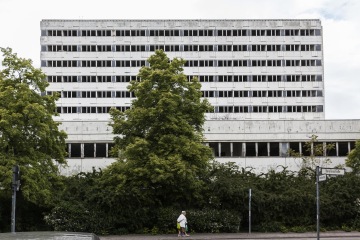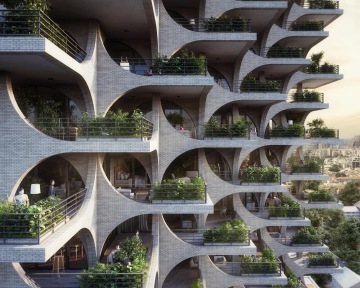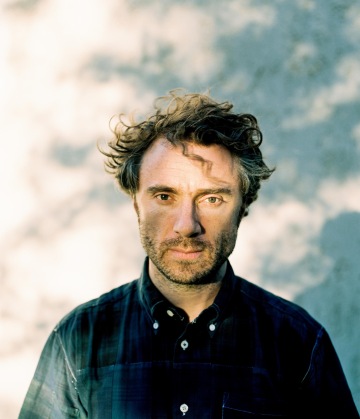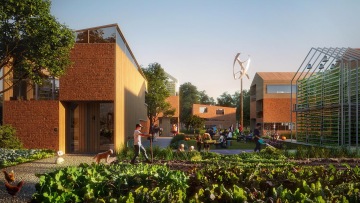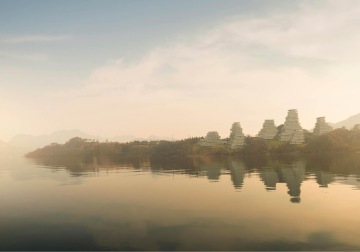
Creating Emotional Connections to Nature with Yosuke Hayano
Yosuke Hayano, principal partner for MAD Architects examined how the studio approaches every project with a vision to create a journey for people to connect with nature through architecture. Listen as he draws on specific projects that embody that connection on a macro and micro level. Photo courtesy of MAD Architects
I think these are about a combination with the space and natural environment, also like the feeling of the space, the atmosphere of the space, how we can trigger the feeling of the people through this natural element to be connected to the context, connected to the city.
Listen to Yosuke Hayano on Design and the City now:
reSITE: How do you bring modern architecture into the future and connect humans with nature?” That is the question Yosuke Hayano, principal partner for MAD Architects brings to the table when the studio approaches any of their projects.
This is a bottom-up dynamic that informs the projects in which nature and the needs of the community shape the built environment, as opposed to an individual creator. It's something they cultivate at every scale.
How can we trigger the feeling of the people through this natural element to be connected to the context, connected to the city.
MAD Architects is creating a vision for the future city. As they’ve put it, they have been “committed to developing futuristic, organic, technologically advanced designs that embody a contemporary interpretation of the Eastern affinity for nature”. During our interview with Yosuke, we examined how they were able to create that vision in a journey for people to meet that nature through architecture.
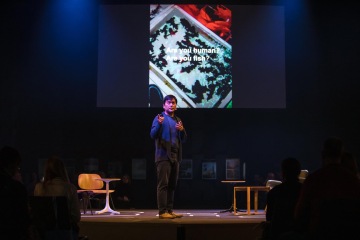
Yosuke Hayano: I’m Yosuke Hayano, from Japan. [I am the] principal partner of MAD Architects based in Beijing, China. We are an architecture design firm to try to push architecture, contemporary architecture and design with an Asian point of view. We do have a lot of different projects inside, and outside of China, including many different typologies - from museums to residential [housing] to airports and also a sports facility. A key point for our projects is how to create a space for people to connect to nature.
reSITE: Yosuke and MAD Architects believe that in the process of development in contemporary Asian cities, the logic of the unique connection between nature and humans has been distorted on the way. Prague is a far cry from Beijing, so we were curious about Yosuke’s take on the city through that same lens.
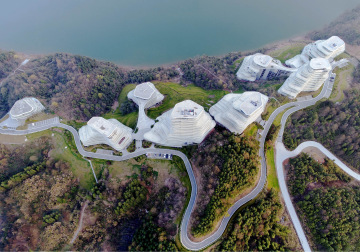
Hayano: I think this is my first time in Prague and my first time in the Czech Republic. It's quite a great opportunity to meet very diverse and different people from all over the world, coming here to discuss how cities can create new space for the future. Listening to other people’s, different peoples’ talks, also talking to each other has given a lot of inspiration for us to think about how to work in this historical city.
reSITE: While they are known for their exquisitely monumental projects such as the Harbin Opera House, Absolute Towers or the Huangshan Mountain Village, perhaps their idea is communicated best on a much smaller scale.
That emotional connection is illustrated in an installation designed by the studio as part of the Echigo-Tsumari Triennale 2018. It is called the ‘Tunnel Of Light’ and it is found at the Kiyotsu Gorge Tunnel in Japan. The tunnel itself offers sweeping panoramic views, overlooking a valley formed by hardened lava rock and the river that runs through it.
This art festival was unique in the sense that all of the projects utilized the existing landscape - blending where the art or architecture ends and nature begins. Yosuke discussed the ideas and intentions that helped them reactivate a space with their installation during his presentation at reSITE.
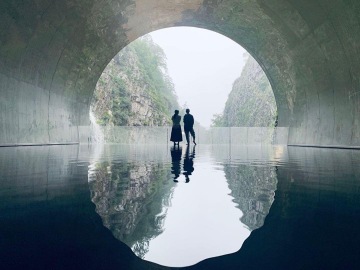
Yosuke Hayano at reSITE: There is one canyon, it’s very famous for its beautiful natural scenery changing with four seasons and a very strong river coming from the surrounding mountain. This space was quite famous, but there was no good viewpoint to see the canyon from outside. The local government decided to create a tunnel to provide a viewing platform for the people around mid-nineties. The local area has a nice hot spring. Also, they have guest houses with restaurants around it. At the end of the street, you will see the entrance to the tunnel. So that was the existing condition.
Overall it’s [spans over] around 750 meters. If you go into the tunnel, you walk 500 meters, then to reach the first platform to see the canyon from the side. Then you have second, third one — it’s a bit similar. Then you’ll reach the final platform to see the canyon from the back. This was the existing condition when we went there. So it’s a very messy condition.
We wanted to make it a journey for the people to meet nature in a different way.
You reach the first platform, you see the tunnel from the side, then you see this wall. Once you get close to the opening, you can see the river, beautiful river with a lot of sound. The last space is the only one where we can see the canyon’s back. The condition for us was to design the entrance facility to be a ticketing café. The second was to put [in] a public toilet somewhere in the tunnel. The third one —do something with the final space to attract people. Then we came back to the mayor saying: “It doesn’t work”. We have to regenerate overall of this tunnel to change the image of it. The tunnel is just a pass to reach the space, but we wanted to make it a journey for the people to meet nature in a different way.
The mayor said it was nice, but they had a limited budget. This is how we changed the entrance facility: this was existing, this is how we’ve designed it. On the ground floor we have a ticketing shop, upstairs, on the second floor, there’s this triangle space. The top is open to the outside but it’s covered by the mirror. The mirror reflects the river in distance, so if you’re there you can enjoy the hot sprinkling on your feet, if you look up you don’t see the river but you can hear the sound of the water. This is the beginning of the journey.
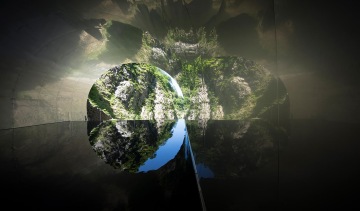
If you go into the tunnel, you’ll see how it’s changed. We used five different colours to transform the feeling from the reality to the outer space. The first platform is kept as it was, this is the memory of this area for the community. The second platform, we put [in] the toilet there. It’s not a regular toilet, it’s like a bubble, with mirror finish stainless steel. If you go inside, you can see through, you can see your friends and family. This shows a different interaction with the nature. With the next space—we have very limited budget, it was very challenging —we used an existing light cable, just changing the fixture on top [for it] to be an organic mirror. If you walk under it, you'll see yourself and many of your friends. Also, this mirror reflection brings nature from the outside to the inside.
How we can trigger the feeling of the people, through this natural element, to be connected to the context and connected to the city.
The final one [spot], this is how it’s been changed: we put the water and stainless steel to bind the boundary between inside and outside, by bringing nature to the inside. The water is very shallow so that people can walk, but it’s coming from the outside river. That’s why it’s [also] very cold, so you cannot stay for long. If there are many people making a ripple, the reflection is not clear. But if you stay calm, you’ll have a perfect reflection. So you have to stay!
This is how people react to this space. Many take photos for Instagram, it expresses the emotional reaction to the space. Because the outside is always changing, it makes the image change as well —it makes people come back. I’m quite sure that people standing there, they don’t care about who designed this, but they are going to remember the day they came here to feel this space and nature, the emotion they had. Then they are going back to their daily life, but I think that's going to make some difference for tomorrow.
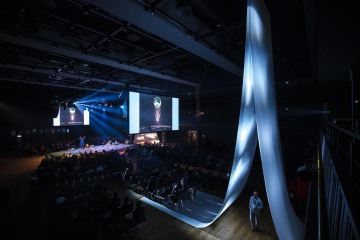
reSITE: In an age where social media has changed the way we connect, Yosuke captures fleeting moments that allow us to connect to something physical through a more permanent form - architecture. During our interview with Yosuke we dug deeper into how MAD fosters that emotional bond between the elements at play and people.
Hayano: I think that one project I also showed in my talk, is one art project in Japan. It’s part of the art festival in the Echigo [Sanzan-Tadami Quasi-National Park]. The project was to renovate the tunnel in the canyon area.
This tunnel was made to create a viewpoint for the visitor to see the canyon from the side, over the end. They were losing tourists, losing attraction for the people, that's why the government wanted to do something to reactivate, to regenerate attraction. So, they ask for the art festival to do something.
I’m quite sure that people standing there, they don’t care about who designed this, but they are going to remember the day they came here to feel this space and nature, the emotions they had.
Then we did the project, to actually transform the tunnel to be kind of journey for the people, for the visitors to meet nature in a different way, with different elements like wind, water, and metal kind of thing to have a different space for them to react with a different emotion and feeling. I think that was quite an interesting challenge.
As a result, this tunnel got five times more visitors compared to the year before. And that makes lots of new, young visitors to this area, also this community. That’s why who is visiting this area was telling the government saying they are very happy to see how this atmosphere of this area is transformed by this project, bringing a lot of positive energy and a lot of young people to come to see their area, their city. And that was kind of very interesting feedback to see.
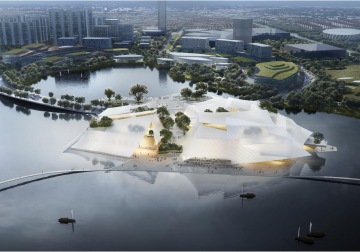
reSITE: We discussed more about how MAD Architects measure a project’s success.
Hayano: I think it’s successful but also it’s in the process because we still keep having conversations with the local government [on] how we can improve or how we can keep this space as kind of a special space for the people to meet nature with a different feeling.
reSITE: When we think of bringing nature back to our cities, the first thought is usually to plant more trees and create more green spaces, but MAD Architects believe we can take it a step further, integrating the subtleties of nature to not just stimulate one’s senses but to integrate it back into their lives.
Hayano: I think to feel the nature, you don't need to be relying on the putting trees or more green things, but small elements, like more water surface, can remind us of nature for the people. I think these are about composition in combination with the space and natural environment, and also like a feeling of the space—the atmosphere of the space. How we can trigger the feeling of the people, through this natural element, to be connected to the context [and] connected to the city. I think that’s more important. It's quite difficult to find out the method, but I think that’s how we try to push our projects.
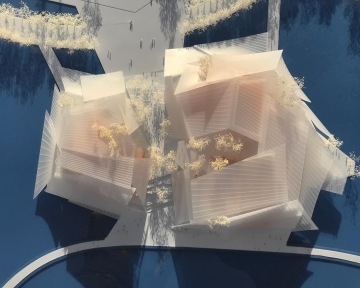
reSITE: At reSITE, we have been speaking a lot about regeneration and what that means today in terms of how we move forward in building and rebuilding our cities. We continued our conversation with Yosuke about what that term means to his studio.
Hayano: I was thinking about the meaning of regenerate the last few weeks and I think to regenerate means something existing, then regenerate something— more than that. I think that's why it's very important to see the history of the space and the history of the area, where they carried out tradition, then carefully observe to find out the potential. Then bring back to the future with the people.
We use our imagination and creativity to bring a kind of memory or history back to the future in a different way.
I think that’s quite inevitable because society is changing, people's lives are changing. That's why urban space requirement is also changing and that’s why we architects actually go out to see the reality, to see how people react to the space and what kind of lifestyle they have. Then, we use our imagination and creativity to bring a kind of memory or history back to the future in a different way. I think that is regenerate for us.
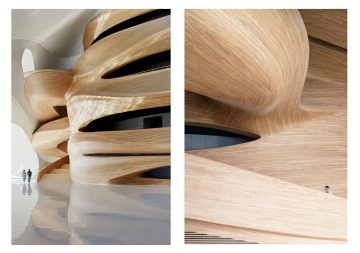
reSITE: MAD Architect’s vision of a futuristic city that remains congruent with nature is best embodied in the term “Shan shui”. A Chinese word for the kind of harmony found between human beings and the natural environment, and something that informs all of MAD’s developments. Although the idea of re-establishing a connection with the environment might sound retroactive, in MAD’s understanding it doesn’t contravene the advancement of technology.
Hayano: I think now we’re in a very critical moment because of this information technology and the change of this technology. The potential of this technology also the way of living in the city is also changing. It’s a bit similar right after the industrial revolution which brought a lot of different people into the city to create lots of different social issues.
So I think now, we might need to observe how this new technology or how this new way of life is making an impact on our industry of architecture and urban design. We should have a clear vision for how the future of the city can be a space for people to enjoy, to live together, instead of suffering from daily life, just only work and live, but like this place belongs to them.

reSITE: With urban planning being very linear, Yosuke advocates for interdependency of the built environment and the life responding to it. A large part of architectural work is envisioning what the future will look like, sometimes a generation down the line.
He uses a specific example of a neighborhood in Beijing, detailing the daily life he observes and how it connects with the space. He makes the case for how much these spaces influence our lives - how we connect with the world and each other.
Hayano: I think Beijing, one of the inspirations I got, I think that many people talk about Futong, it’s a downtown area. There are a lot of houses put together sharing the street becoming part of the [living] space. So if you go there in the morning, you see many kids running or they’re having breakfast outside. In the day time, many older people come out with chairs and are talking to each other. Then in the nighttime, it’s a very different atmosphere as well. So how people use urban space as part of the state of their life. It’s very attractive. It’s a very active way of using urban space.
The future of the city can be a space for people to enjoy, to live together, instead of suffering from daily life, just only work and live, but like this place belongs to them.
I think this is kind of very difficult because we don’t have any way to create this kind of space with our project. Like a new project, a new urban project or architecture project is coming from different criteria. Some about efficiency, some about square meters, some about more economical aspects. But we don’t have any logic or approach on how to keep or create this kind of new urban space in the future.
So I think this quite inevitable for us to discuss how we can evaluate [and] how we can talk about this beautiful urban space made history. Not only about keeping it for the future, but about how we can create a new kind of urban space in the future, which can make more active urban reaction for the people living there. Also, to be a very characteristic space for the city itself.
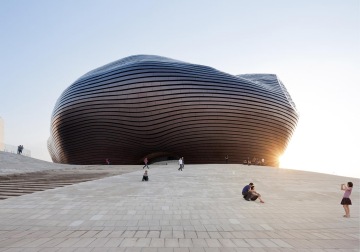
reSITE: Climate change is something on all of our minds these days. We asked Yosuke how he sees the problem. And his answer is not surprising— we will not solve this alone.
Hayano: I think architecture has many aspects, like structure, design, so on and so on. The environment is a design goal to go beyond architecture. I think that is why it’s quite difficult to do something for the environment through architecture. But I think this a very big topic because in China we know it is a big climate problem, lots of air pollution as well. In Japan as well, we have a huge typhoon coming every year destroying the community and buildings as well. But we all know, we are all aware that this is not normal. We have to take action about how to adapt, how to stop this.
I think we need [to call on] different disciplines, not only architects. We have to work with the scientists, we have to work with the politicians, also urban designers, also educators. It’s really necessary to have kind of vision of how the future of the city can deal with these issues, deal with this climate change in different ways. Then we have to bring this one back to professionals to implement into their daily work.
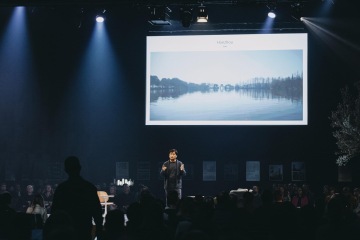
reSITE: When we think about regeneration—we think about it on every scale, in terms of our cities and ourselves. Before we wrap up we asked Yosuke about how he regenerates himself as an architect and value it holds.
Hayano: I think for me as an architect, it is very important because we are here because we have a passion and a belief in architecture. But to keep it is very difficult because most of our job is solving problems. But I think coming to this new place, like attending this kind of conference to see something different, that’s really helped me to regenerate this passion, to do something for the future and to make the world of tomorrow a better place.
That was Yosuke Hayano, the principal partner at MAD Architects.
He reminds us all about the importance of nurturing that relationship we humans have with our natural environment, and how it can be facilitated through design. We are after all part of that nature.
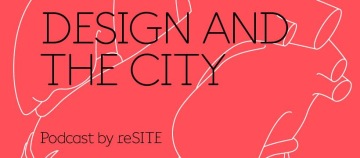
Design and the City is brought to you by reSITE and organized as part of the project, Shared Cities: Creative Momentum. This podcast is produced by Radka Ondrackova, Matej Kostruh, Adriana Bielkova, Gil Cienfuegos and Polina Riabukha. It is directed and hosted by Alexandra Siebenthal, and recorded and edited by LittleBig Studio.
Listen to more from Design and the City
Fighting Gentrification, Berlin-Style with Leona Lynen
A vast, unoccupied administration building in the heart of Berlin at Alexanderplatz - Haus der Statistik - has become a prototype for gentrification done right. Hear from Leona, a member of the cooperative, ZUsammenKUNFT, as she discusses how they are developing a mixed-use urban space oriented towards the common good. Photo courtesy of Nils Koenning
A New Generation of Architects with Chris Precht
Chris Precht’s aim to reconnect our lives to our food production by bringing it back into our cities and our minds can be found throughout his architecture. Listen as he discusses the importance of authenticity, creating spaces that activate our senses, and looking at our objective reality to solve the problems of our time.
Designing on a Human Scale with Thomas Heatherwick
Thomas Heatherwick’s holistic approach brings a thoughtful dimension to architecture, design and urban spaces. Listen to the acclaimed designer along with ArchDaily editor, Christele Harrouk, as they explore how he approaches projects by considering them from a human scale.
Human-Centered Smart Cities with Marianthi Tatari
Associate Director and Senior Architect at UNStudio, Marianthi Tatari, dissects different aspects of city-making that threaten the quality of life such as mono-functional spaces and commoditized smart cities and how to approach designing them with optimism. Photo courtesy of UNStudio
